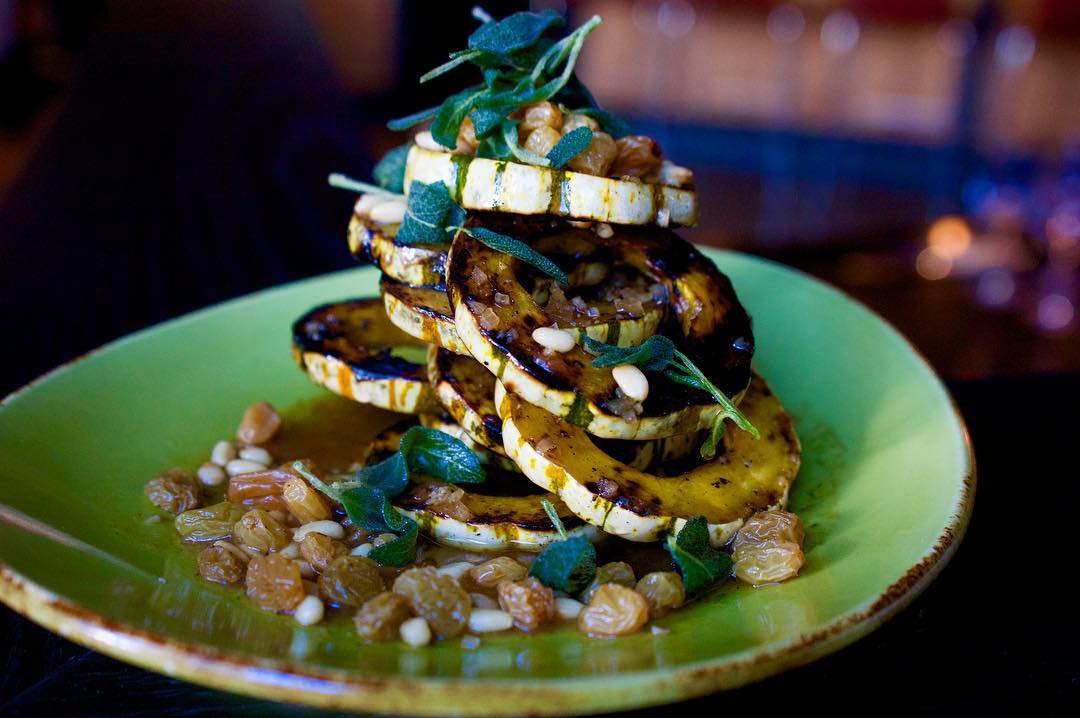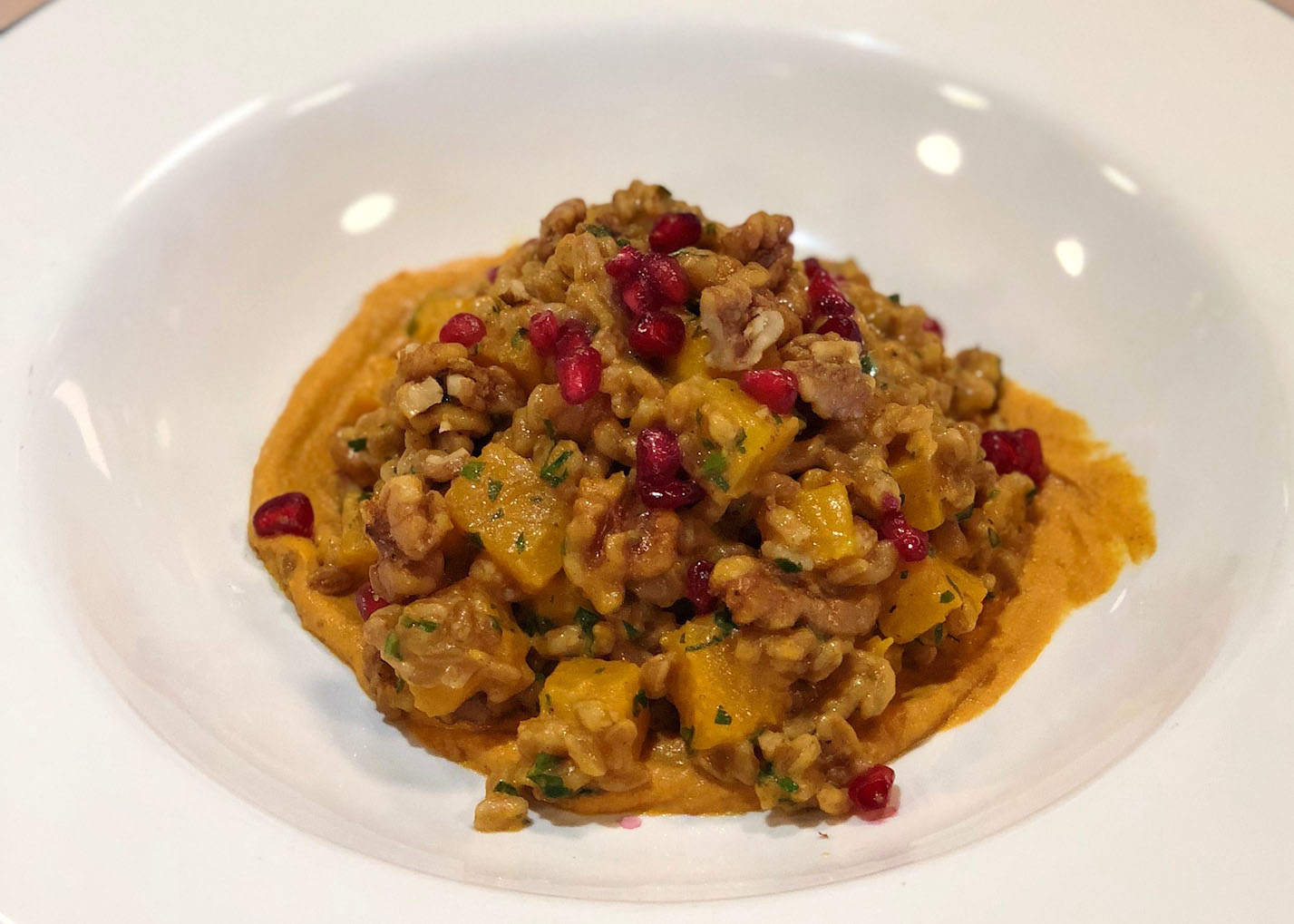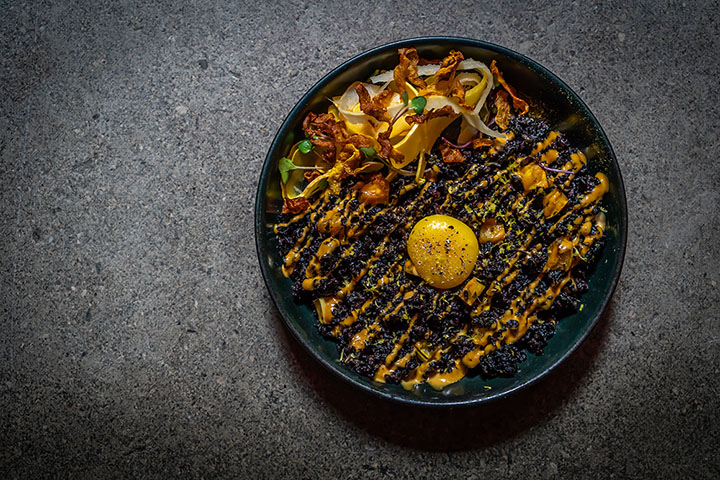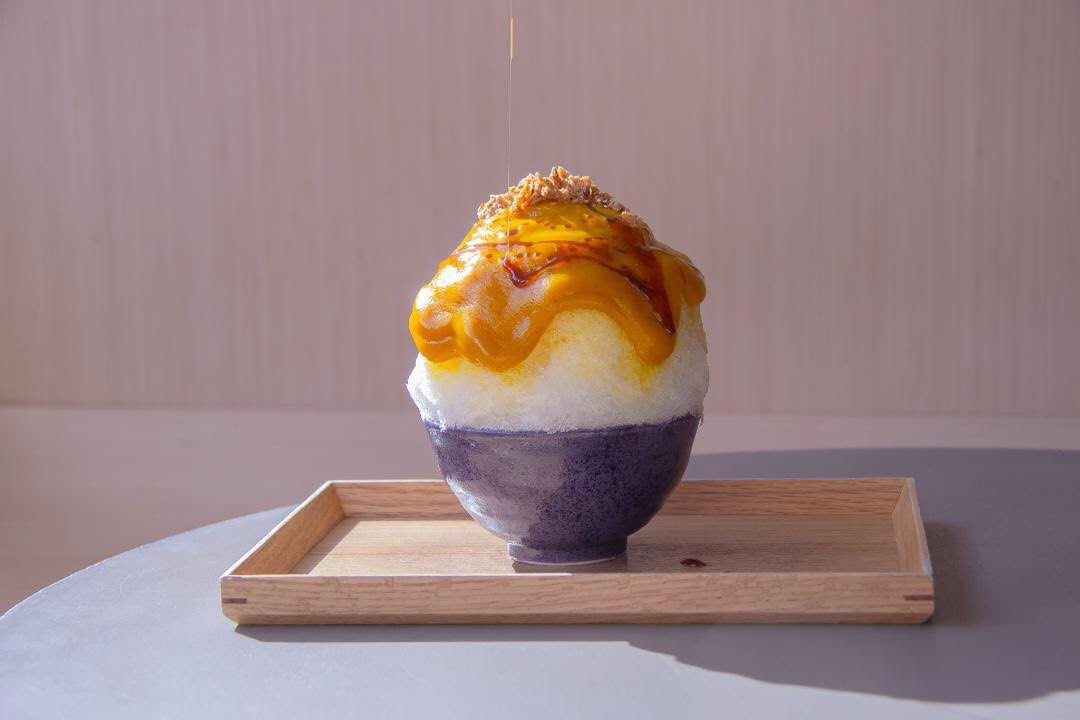Gourds, squash and pumpkins — or scientifically speaking, members of the Cucurbitaceae family of plants — have long been multipurpose produce. Dried and used as vessels for drinking and storage, filled with beans as musical instruments and, high in antioxidants, the autumnal plants have even been used in wellness and beauty applications.
Equally versatile in the world of cooking, they can be sturdy enough to replace the meat in tacos, rich enough to replicate cream in a soup and healthy enough to keep your engine chugging through flu season.
Introduced largely by Native Americans, most are classified technically as fruits because they have seeds, but in cooking are treated more like vegetables. Found year-round, pumpkin and winter squash varieties enjoy a pronounced spike in fall soups and sides, Thanksgiving sweets and post-Labor Day snacks of all sorts.
Culinary Arts Chef-Instructor King Phojanakong lauds squash and pumpkin as highly agreeable ingredients that take well to most methods of cooking and carry no cardinal rules to follow. Chef King reminds that many varieties can be eaten raw too, shaved thin into salads, as he’s known to do at Kuma Inn, his Southeast Asian eatery in Manhattan’s Lower East Side, where he incorporates squash and pumpkin creatively and often.
Despite gourds’ relative versatility, with nearly a thousand varieties (some edible, some not), there is endless nuance to consider. Often large and thick-skinned, with a range of densities, cooking times and taste profiles to consider, getting to know them, even just a bit, can help quell the intimidation one might feel approaching a holiday recipe or mountain of gourds at the market this time of year.
Further west, Troy Guard, chef and owner of Colorado’s TAG Restaurant Group, uses gourds in almost every way imaginable in his eight restaurants splashed across the Denver metropolitan area and generously agreed to share some of his favorite varieties, hacks and uses for some of the many popular (and not as popular) squash and pumpkins grown today.

Sugar Pumpkin
Perhaps the most well-known of all fall foods, in many ways the pumpkin has come to define fall, for better or worse (looking at you, Starbucks). Beyond carving them for late October decor, the bulbous orange squash cultiver has become the season’s signature flavor, especially when combined with a specific pie spice mix known as “pumpkin spice,” which finds its way into everything from beer to bread, soup, pie and even our morning coffee this time of year.
What to know: For cooking, sugar pumpkins are the smaller, more chef-friendly cousin of the ones you’re likely to have carved (and if you’re like me, ruined) while drinking a mug of cider. Guard praises their balanced sweet and savory flavor and although he and others have tired of the pumpkin spice trope, he’s an enormous fan of the ingredient, using it in everything from breads and pancakes to more savory offerings like stuffed agnolotti and ravioli.
What to do with it: Pumpkin takes well to a whole roast for which Guard recommends first removing the guts and seeds (save and dry roast the seeds). After roasting the pumpkin, Guard and his team remove the flesh and aren’t afraid to push it to exotic places with bold platings like Thai and Indian pumpkin curry. He deems it the “most well balanced” of the bunch and an exceptional canvas for flavors of any volume.
ICE alumni variation: Chef Marc Murphy (Culinary, ’90) serves pumpkin in his farrotto with pomegranate and smoked walnuts at Landmarc in New York City.

Butternut Squash
Surely the most used of the fall/winter squash contingent, you’ll find it featured prominently in soups, but also stuffed pastas with brown butter sauce or as simple sides, cubed and roasted with olive oil, maple or brown sugar. Butternut, sometimes referred to as “Waltham butternut” or “butternut pumpkin” can carry a dish with ease, a true icon of cool weather cooking.
What to know: Rich in Vitamin A, this pear-shaped squash can handle almost any type of heat; long and low, high and hasty, without losing its integrity or becoming mushy or stringy, which makes it a perfect starter squash. With namesake nuttiness, this variety is also on the sweet side of the spectrum and quite dense, so it typically takes longer to cook than some of its brethren. The light and tan skin is often removed and is thin enough to do so with a vegetable peeler.
What to do with it: Beyond the obvious roast and puree for a soup, Chef Guard and his team take advantage of its sturdiness by cooking butternut via sous vide method (a low and slow controlled water bath) or in a scalding hot pan with butter to achieve a char and caramelized crust. Guard recommends simple companion flavors to bring out the butternut’s inherent depth.
ICE alumni variation: Chef Vivian Howard (Culinary, ’03) serves a butternut squash casserole with Italian sausage, mornay, turnip greens, croutons and thyme at Chef & the Farmer in Kinston, North Carolina.
Delicata Squash
Aptly named for its delicate (and edible) skin, this winter squash is shaped like a russet potato, cream colored and marked by veiny green stripes. Delicata is a very popular varietal with sweet flavor and creamy texture. Chef King mentions that a successful hybrid of the aforementioned butternut and the sweet delicata dubbed the “honey nut” has enjoyed recent popularity.
What to know: If you’re eating delicata, skin and all, make sure to give it a serious scrub beforehand. Grown easily, quickly and bountifully in fall, hack-loving efficiency experts appreciate that it doesn’t require peeling before cooking and/or eating. You’ll often find them cast atop fall salads or as a hearty side in restaurants.
What to do with it: Delicatas have a round sweetness and are wonderful sliced and grilled or roasted. Because they are naturally high in sugar and less dense, Guard loves to slice them and cook over an oak grill from which they’ll take a smokey char that brings out the sweetness and pairs great with seafood.
ICE alumni variation: Chef Greg Proechel (Culinary, ’09) serves delicata squash in his Forbidden Rice with black vin aioli and egg yolk at Ferris in New York City.

Red Kuri Squash
This is a sleeper squash and one I was altogether unfamiliar with, but one Guard insisted I investigate. Part of the hubbard squash group, red kuri (not to be confused with red curry) is actually cultivated in warmer climates like California, Mexico and southern Colorado, which helps explain Guard's familiarity.
What to know: In Japanese, kuri means chestnut and when cooked, this one gives off serious roasted chestnut vibes with a pleasant creamy texture. The teardrop-shaped winter squash is protected by a hard and dazzlingly bright orange skin while the flesh is firm to touch and pumpkin orange/yellow. The pulp and seeds should be removed before cooking.
What to do with it: With its rich and nutty flavor profile, Guard notes that the kuri doesn’t need a lot of help and he loves to roast and puree it to be served as a side with steak or chicken or added into a winter pasta. Like many squash on this list, the kuri packs a power health punch with loads of vitamins, iron and potassium.
ICE alumni variation: Director of Culinary at 1 Hotel Brooklyn Bridge Park, Ivy Stark (Culinary, ’95) is serving an omelet with red kuri squash, roasted red pepper, farmer’s cheese and paprika hollandaise for brunch at The Osprey in Brooklyn.
Kabocha Squash
Also known as Japanese pumpkin, kabocha has been on a roll of late and you’re liable to find it on the menu at some of the most prolific and trendy restaurants in the country. Sporting numerous health antioxidants, Kabocha resembles the sweet potato in taste but looks much more like a small, flat, green pumpkin.
What to know: Kabocha’s thick almost amphibious green and white speckled skin gives way to a dry orange flesh, which sweetens when cooked. Kabocha stands up well to high-heat roasting and strong companion flavors and spices like cinnamon, curry and nutmeg.
What to do with it: The skin of the Kabocha is edible when cooked so feel free to roast and serve it whole. The seeds can likewise be roasted and sprinkled over salads or salted and eaten by the fistful.
ICE alumni variation: Olivia Leung (Pastry, ’13) and Eddie Zheng (Pastry, ’13) serve a vegan Japanese pumpkin kakigori (shaved ice dessert) with kabocha squash, ginger syrup, kuromitsu and pumpkin lace cookie at The Little One in New York City.

Spaghetti Squash
The original paleo pasta, spaghetti squash has been marginalized slightly with the advent of vegetable spiralizers and other low-carb options in our post-gluten landscape, but it’s ripe for a comeback.
What to know: Spaghetti squash comes in a variety of colors and sizes from bright yellow to deep orange. The flesh inside becomes stringy when cooked, which serves as one of its most defining characteristics. Since it's lighter and lower in residual sugar, it can handle the sweetness of a tomato sauce.
What to do with it: Guard suggests simply halving the golden oblong gourd and drizzling with good olive oil face down until fork tender. Scrape out the “spaghetti,” finish with delicate fresh herbs and pair with a favorite pasta sauce, hard cheese, eggplant or grilled protein.
ICE alumni variation: Tijen Demirel (Culinary, '10) is the head chef of Clean Eats Meal Prep, which offers Eggplant Balls served over spaghetti squash with a house marinara and sprinkled grated parmesan, in Haledon, New Jersey.
Acorn Squash
This smaller acorn-shaped squash has also been dubbed the “pepper squash” for its stark resemblance to the vegetable. The acorn is indigenous to North and Central America and can be found in dashing hues of deep green and bright yellow with a firm orange flesh inside.
What to know: Acorn squash has flavor often described as mild or mellow which means it is well served when paired with big flavors like bacon, maple or sage. As far as squash goes, acorn is also extremely nutrient dense.
What to do with it: Because of its attractive and manageable single-serving size, these are great to halve, gut, season or stuff (optional), roast and serve one per guest at an October dinner party as a hearty vegetable course or main. Guard notes the thin skin is edible, so serve and enjoy as much or as little of the acorn as you desire.
ICE alumni variation: Chef de Cuisine Chris Shea (Culinary, '04) serves Burrata & Acorn Squash with balsamic, pomegranate, hazelnuts and arugula for brunch at The Wayfarer in New York City.
Learn more ingredient and cooking fundamentals in ICE's Culinary Arts program.



